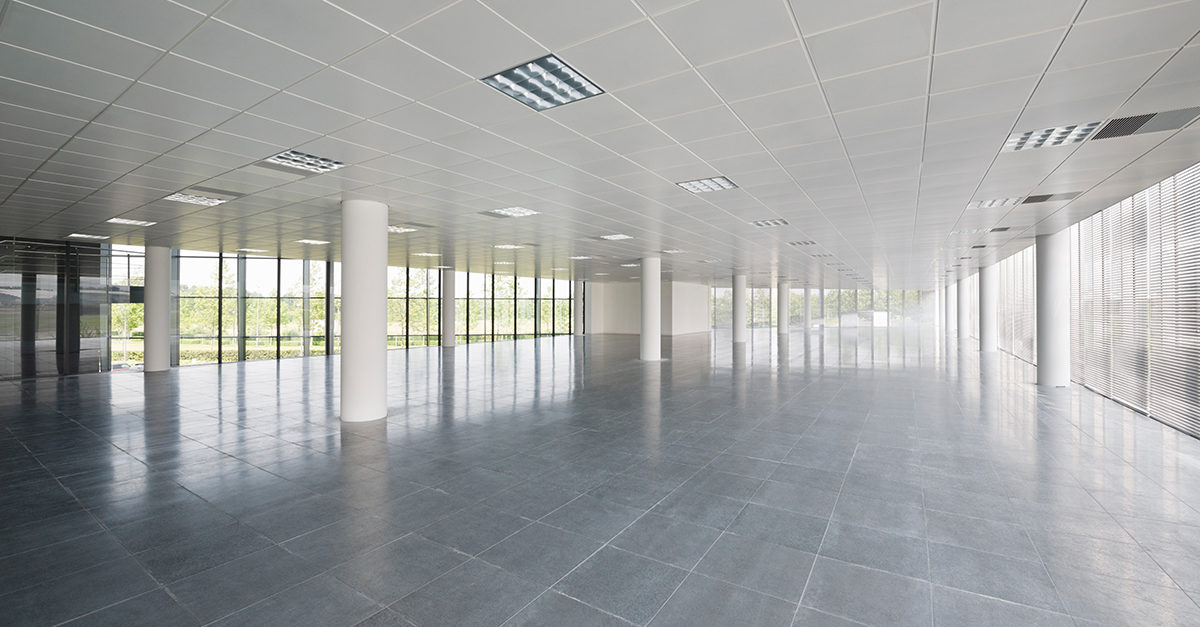Volatile organic compounds (VOCs) are ubiquitous in every commercial and industrial facility—as well as in homes, cars, and any indoor environment containing rubbers, silicones, greases, paints, cleaning supplies, building materials, and furniture.
Most of the time, the presence of VOCs goes completely undetected. However, these hidden chemicals can wreak havoc on building lighting fixtures by damaging the LEDs themselves and the electrical components contained within.
Believing there is no viable solution to this issue, some organizations suffer with inadequate facility lighting because they consider lighting solutions cheap and disposable. But this inaction puts employees at risk, drives up facility and building maintenance costs, and introduces a slew of safety hazards due to insufficient lighting.
Fortunately, it doesn’t have to be this way. With a few simple strategies and smart investments, facilities can mitigate the impact of VOCs to provide safe, dependable, and high-visibility lighting that protects workers and the environment.
A hidden cause of lighting failure
From the carpeting on the office floor to the cleaning chemicals used to disinfect surfaces, VOCs are abundant in nearly every indoor structure. Similar to VOCs, reactive gases like hydrogen sulfide, sulfur dioxide, and chlorine are also emitted through various building maintenance processes—ultimately leaving no facility untouched from their harsh impacts.
The issue is even more complex in electrical systems. VOCs affect conventional lighting lenses and wires, such as fluorescents and high-intensity discharge (HID), discoloring and lowering light output. They can also corrode individual, exposed electrical components, causing flicker, premature fixture failure, and avoidable hazards.
Unfortunately, even enclosed LED fixtures are not immune. VOCs can permeate silicone-based seals, discoloring the diode surface itself, decreasing light output, and causing color shift that diminishes visibility. Similarly, reactive gases can damage the LEDs and sensitive connections that power the fixtures.
The hazards of poor visibility
According to the 2022 In-House Facility Management Benchmarking Survey Report, health, safety and improving facility and building image and security are the most important issues for facility managers and service contractors. But the impact of VOCs and reactive gases on lighting can make achieving these goals extremely difficult.
Inadequate lighting, exposed electrical parts, and corroded fixtures put workers at risk. Poor lighting is a leading cause of the most common types of accidents and improving illumination has shown to reduce accident rates by as much as 60%.
Providing a well-lit, vibrant work environment is essential for maintaining facility and overall building image and security. Brighter facilities make for cleaner workspaces and better employee morale. They also make it much easier for employees to perform work that requires precision and pay attention to detail. Improved lighting can also dramatically improve the clarity of closed-circuit camera systems, enhancing security.
Failure to keep lighting and electrical systems in good working order can even result in costly city/county penalties, OSHA infractions, and even building closures.
But the presence of VOCs in the atmosphere can make keeping up with lighting and electrical maintenance in heavy industrial facilities a never-ending chore. It can also be an extremely expensive chore, with 91% of facilities bearing the burden of bulb replacement in-house. Between the specialized equipment needed to reach high-mounted fixtures, the rewiring requirements for overloaded circuits, and the need to keep plenty of replacement bulbs on hand for a wide range of fixture models, it can cost hundreds of thousands of dollars a year, just to maintain a building’s framework.
Investing in upgraded lighting pays dividends
Upgrading to high-efficiency, high-durability LED lighting is an often-overlooked solution to combat the impact of VOCs and reactive gases. As LED fixtures can last up to ten years, they provide long-life performance with near-zero maintenance. Due to their brightness and more accurate color-rendering capabilities, LEDs also enhance the quality of security camera footage, allowing staff to better monitor for risks.
New LED technologies demonstrate resilience to VOCs and reactive gases. They feature VOC-resistant coatings, along with noble metal electrical contacts and protected conductive joints to resist corrosion. These new features ensure the lights stay on and their electrical components remain secure, all while delivering optimal output and visibility, even in the harshest environments.
As an added bonus, investing in resilient LED fixtures can also help ease investor pressure around reducing emissions. In addition to their long-life performance, LED fixtures can cut electrical consumption by at least 75% compared to conventional fixtures.
All of these factors make investing in upgraded lighting a win for building safety, security, and sustainability.



